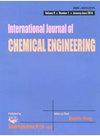关于将稻草转化为不同增值产品和生物燃料的研究
IF 2.4
4区 工程技术
Q3 ENGINEERING, CHEMICAL
引用次数: 0
摘要
这项工作表明,稻草(RS)是世界上主要的木质纤维素废物之一,造成了许多环境问题,它含有大量的蛋白质、灰分、宏量营养素和微量营养素,分别约为 11.38%、16.77%、2.27 mg/kg 和 771.9 mg/kg;此外,C/N 比为 15.18,总氮、P2O5 和 K2O 含量为 1.85,不良重金属和二氧化硅的浓度也相当低,分别约为 77.69 mg/kg 和 109 mg/kg。18 ,总氮、P2O5 和 K2O 含量为 1.85%,不良重金属和二氧化硅的浓度也相当低,分别约为 77.69 毫克/千克和 109 毫克/千克。在底物浓度为 20%(w:v)、pH 值为 7、接种量为 1%、培养期为 9 天、培养温度为 30°C 的最佳操作条件下,长臂毛癣菌 DSMZ 16517 对 RS 进行批量固态发酵(SSF),产生了大量总还原糖(TRS),约为 339.2 毫克 TRS/克 RS。事实证明,甘蔗糖蜜这种容易获得且成本效益高的农用工业废料能促进真菌生物量的增长和(半)纤维素分解酶的活性。在 RS-SSF 批次工艺中接种在 10%糖蜜中预培养的长枝孢霉,与接种在传统马铃薯葡萄糖肉汤培养基中预培养的长枝孢霉相比,(半)纤维素分解酶活性和 TRS 生产率分别提高了约 5.82 倍和 3.8 倍。不同的酵母菌株 Candida tropicalis DSM 70156、C. shehatae ATCC 58779 和 Saccharomyces cerevisiae ATCC 64712 在水解和发酵过程中分别获得了 0.36 至 0.38 克/克糖和 0.22 至 0.23 克/升/小时的生物乙醇产量和生产率,发酵效率在 48.35% 至 51.25% 之间。对真菌水解前后的稻草进行的近似分析表明,其热值分别约为 15.8 兆焦/千克和 16.05 兆焦/千克,建议将其用作初级和次级固体生物燃料。因此,这项研究证明了废料 RS 在环境富裕和可持续发展方面的巨大潜力。本文章由计算机程序翻译,如有差异,请以英文原文为准。
A Study on the Valorization of Rice Straw into Different Value-Added Products and Biofuels
This work depicts that rice straw (RS), which is one of the major lignocellulosic wastes all over the world and causing many environmental problems, has considerable amounts of protein, ash, macronutrients, and micronutrients of approximately 11.38%, 16.77%, 2.27 mg/kg, and 771.9 mg/kg, respectively; besides, a C/N ratio of 15.18, a total N, P2O5, and K2O content of 1.85%, and a considerably low concentration of undesirable heavy metals and silica of approximately 77.69 mg/kg and 109 mg/kg are also present, which recommends its applicability as a precursor feedstock for the production of organic fertilizer and animal fodder. The batch solid-state fermentation (SSF) of RS by Trichoderma longibrachiatum DSMZ 16517 produced considerable amount of total reducing sugars (TRS) of approximately 339.2 mg TRS/g RS under the optimum operatic conditions of 20% (w:v) substrate concentration, pH 7, 1% inoculum size, a 9-day incubation period, and 30°C incubation temperature. The readily available and cost-effective agroindustrial waste, sugarcane molasses, proved to enhance the fungal biomass growth and (hemi) cellulolytic enzymes activities. The inoculated RS-SSF batch process with T. longibrachiatum precultured on 10% molasses enhanced the (hemi) cellulolytic enzymatic activities and TRS production rate by approximately 5.82 and 3.8 folds, respectively, relative to that inoculated by T. longibrachiatum precultured in the conventional potato dextrose broth medium. The separate hydrolysis and fermentation processes by different yeast strains Candida tropicalis DSM 70156, C. shehatae ATCC 58779, and Saccharomyces cerevisiae ATCC 64712 revealed an efficient bioethanol yield and productivity that ranged between 0.36 and 0.38 g/g sugars and 0.22 and 0.23 g/L/h, respectively, with concomitant competent fermentation efficiencies that ranged between 48.35% and 51.25%. The proximate analysis of rice straw before and after fungal hydrolysis proved calorific values of approximately 15.8 MJ/kg and 16.05 MJ/kg, respectively, recommending their applicability as primary and secondary solid biofuels. Thus, this study proved the waste prosperity of RS for environmental opulence and sustainability.
求助全文
通过发布文献求助,成功后即可免费获取论文全文。
去求助
来源期刊

International Journal of Chemical Engineering
Chemical Engineering-General Chemical Engineering
CiteScore
4.00
自引率
3.70%
发文量
95
审稿时长
14 weeks
期刊介绍:
International Journal of Chemical Engineering publishes papers on technologies for the production, processing, transportation, and use of chemicals on a large scale. Studies typically relate to processes within chemical and energy industries, especially for production of food, pharmaceuticals, fuels, and chemical feedstocks. Topics of investigation cover plant design and operation, process design and analysis, control and reaction engineering, as well as hazard mitigation and safety measures.
As well as original research, International Journal of Chemical Engineering also publishes focused review articles that examine the state of the art, identify emerging trends, and suggest future directions for developing fields.
 求助内容:
求助内容: 应助结果提醒方式:
应助结果提醒方式:


